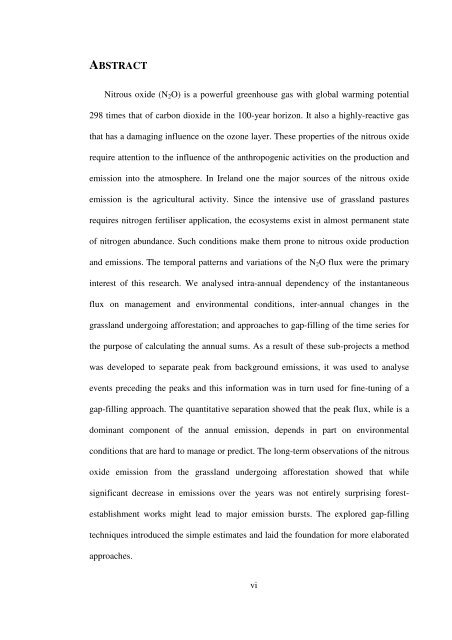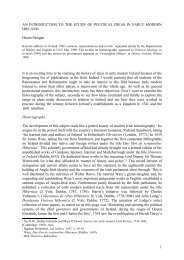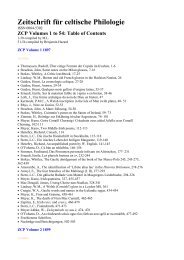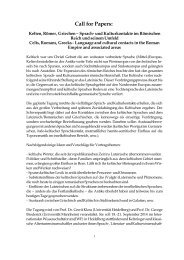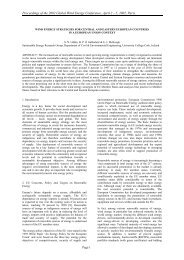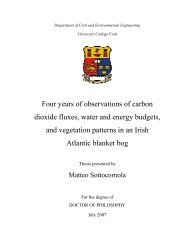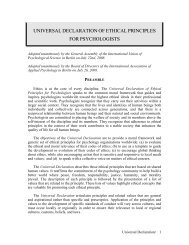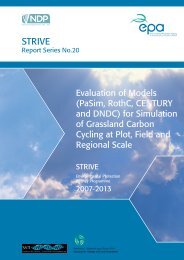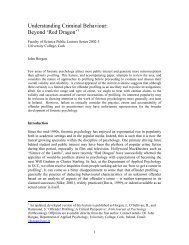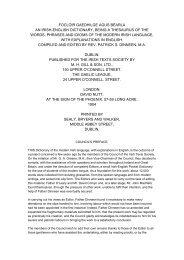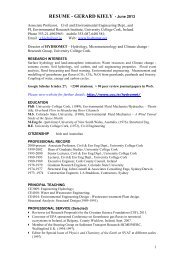PhD Thesis, 2010 - University College Cork
PhD Thesis, 2010 - University College Cork
PhD Thesis, 2010 - University College Cork
Create successful ePaper yourself
Turn your PDF publications into a flip-book with our unique Google optimized e-Paper software.
ABSTRACT<br />
Nitrous oxide (N 2 O) is a powerful greenhouse gas with global warming potential<br />
298 times that of carbon dioxide in the 100-year horizon. It also a highly-reactive gas<br />
that has a damaging influence on the ozone layer. These properties of the nitrous oxide<br />
require attention to the influence of the anthropogenic activities on the production and<br />
emission into the atmosphere. In Ireland one the major sources of the nitrous oxide<br />
emission is the agricultural activity. Since the intensive use of grassland pastures<br />
requires nitrogen fertiliser application, the ecosystems exist in almost permanent state<br />
of nitrogen abundance. Such conditions make them prone to nitrous oxide production<br />
and emissions. The temporal patterns and variations of the N 2 O flux were the primary<br />
interest of this research. We analysed intra-annual dependency of the instantaneous<br />
flux on management and environmental conditions, inter-annual changes in the<br />
grassland undergoing afforestation; and approaches to gap-filling of the time series for<br />
the purpose of calculating the annual sums. As a result of these sub-projects a method<br />
was developed to separate peak from background emissions, it was used to analyse<br />
events preceding the peaks and this information was in turn used for fine-tuning of a<br />
gap-filling approach. The quantitative separation showed that the peak flux, while is a<br />
dominant component of the annual emission, depends in part on environmental<br />
conditions that are hard to manage or predict. The long-term observations of the nitrous<br />
oxide emission from the grassland undergoing afforestation showed that while<br />
significant decrease in emissions over the years was not entirely surprising forestestablishment<br />
works might lead to major emission bursts. The explored gap-filling<br />
techniques introduced the simple estimates and laid the foundation for more elaborated<br />
approaches.<br />
vi


